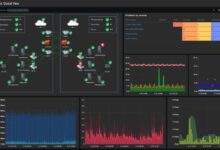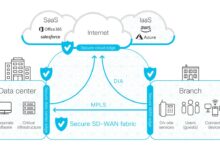Cloud-native networking solutions: Reimagine your network for the modern era
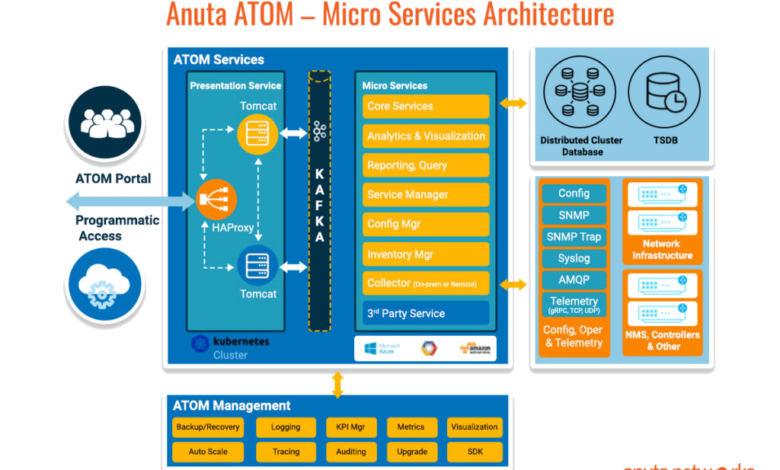
Cloud-native networking solutions are revolutionizing the way networks are designed, managed, and secured. By embracing cloud-native principles, organizations can unlock a world of benefits, including improved agility, flexibility, and cost savings. This comprehensive guide will delve into the fundamentals of cloud-native networking, exploring its key components, architectures, and best practices.
Get ready to transform your network and empower your business with the power of cloud-native networking.
Cloud-native networking solutions are not just a buzzword; they represent a paradigm shift in network design and management. By embracing cloud-native principles, organizations can unlock a world of benefits, including improved agility, flexibility, and cost savings. This comprehensive guide will delve into the fundamentals of cloud-native networking, exploring its key components, architectures, and best practices.
Get ready to transform your network and empower your business with the power of cloud-native networking.
Cloud-Native Networking Fundamentals
Cloud-native networking is a new approach to designing and operating networks that is specifically tailored to the needs of cloud-based applications. It is based on the principles of software-defined networking (SDN) and cloud computing, and it leverages the benefits of virtualization and automation to provide a more agile, scalable, and secure networking infrastructure.
Benefits of Cloud-Native Networking
- Agility:Cloud-native networking solutions are designed to be agile and responsive to the changing needs of cloud-based applications. They can be provisioned and deployed quickly and easily, and they can be scaled up or down as needed.
- Scalability:Cloud-native networking solutions are designed to be scalable to meet the demands of even the largest cloud-based applications. They can support millions of concurrent connections and can handle large amounts of traffic.
- Security:Cloud-native networking solutions are designed to be secure. They include a number of features that protect against attacks, such as firewalls, intrusion detection systems, and access control lists.
- Cost-effectiveness:Cloud-native networking solutions are cost-effective. They are typically priced on a pay-as-you-go basis, so you only pay for the resources that you use.
Challenges of Cloud-Native Networking
- Complexity:Cloud-native networking solutions can be complex to design and implement. They require a deep understanding of SDN and cloud computing technologies.
- Security:Cloud-native networking solutions can be a target for attacks. It is important to implement strong security measures to protect against these attacks.
- Cost:Cloud-native networking solutions can be expensive to implement. It is important to carefully consider the costs before deploying a cloud-native networking solution.
Real-World Examples of Cloud-Native Networking Implementations
- Google Cloud Platform (GCP):GCP offers a number of cloud-native networking solutions, including Google Cloud Network, Google Cloud Load Balancing, and Google Cloud Firewall.
- Amazon Web Services (AWS):AWS offers a number of cloud-native networking solutions, including Amazon Virtual Private Cloud (VPC), Amazon Elastic Load Balancing (ELB), and Amazon CloudFront.
- Microsoft Azure:Azure offers a number of cloud-native networking solutions, including Azure Virtual Network, Azure Load Balancer, and Azure Firewall.
Comparison of Cloud-Native Networking Solutions with Traditional Networking Approaches
| Feature | Cloud-Native Networking | Traditional Networking |
|---|---|---|
| Agility | Agile and responsive | Slow and inflexible |
| Scalability | Scalable to meet the demands of large cloud-based applications | Limited scalability |
| Security | Secure with built-in security features | Less secure |
| Cost | Cost-effective with pay-as-you-go pricing | More expensive |
Key Components of Cloud-Native Networking
Cloud-native networking encompasses a suite of essential components that collectively empower secure, scalable, and resilient networking within cloud environments. These components seamlessly collaborate to establish a robust foundation for modern application architectures.
Virtual Networks
Virtual networks (VNs) are software-defined networks that provide logical isolation and connectivity within cloud platforms. They offer numerous advantages, including:
- Isolation:VNs isolate network traffic, ensuring that applications do not interfere with each other.
- Flexibility:VNs can be dynamically created, modified, and deleted, enabling rapid provisioning and scaling of network resources.
- Security:VNs implement security policies to protect against unauthorized access and data breaches.
Containers
Containers are lightweight, isolated environments that package applications and their dependencies. They play a crucial role in cloud-native networking by:
- Isolation:Containers isolate applications from the underlying infrastructure, ensuring consistent performance and behavior.
- Portability:Containers can be easily moved between different cloud platforms and on-premises environments.
- Scalability:Containers can be scaled up or down quickly and efficiently, enabling dynamic resource allocation.
Service Meshes
Service meshes are dedicated networking layers that manage communication between microservices. They provide a range of benefits, including:
- Service Discovery:Service meshes automatically discover and register microservices, simplifying service communication.
- Load Balancing:Service meshes distribute traffic across multiple instances of a microservice, ensuring high availability.
- Security:Service meshes implement security policies to protect microservices from unauthorized access and data breaches.
| Component | Role | Benefits |
|---|---|---|
| Virtual Networks | Logical isolation and connectivity | Isolation, flexibility, security |
| Containers | Application isolation and portability | Isolation, portability, scalability |
| Service Meshes | Microservice communication management | Service discovery, load balancing, security |
These key components synergistically orchestrate to deliver a comprehensive and adaptable networking solution for cloud-native environments. By embracing these components, organizations can unlock the full potential of cloud-native networking, fostering agility, scalability, and security in their application architectures.
Cloud-Native Networking Architectures: Cloud-native Networking Solutions
Cloud-native networking architectures enable organizations to build and manage networks that are agile, scalable, and resilient. These architectures leverage the principles of cloud computing, such as elasticity, automation, and self-service, to provide a more efficient and cost-effective way to manage networks.There
are a variety of different cloud-native networking architectures that can be used, depending on the specific needs of an organization. Some of the most common architectures include:
- Single-cluster architecture:This is the simplest type of cloud-native networking architecture, and it is typically used in small-scale environments. In a single-cluster architecture, all of the network resources are deployed within a single cluster. This makes it easy to manage the network, but it can also limit scalability and resilience.
- Multi-cluster architecture:This type of architecture is used in larger-scale environments, where it is necessary to scale the network across multiple clusters. In a multi-cluster architecture, the network resources are distributed across multiple clusters, which can improve scalability and resilience. However, it can also make the network more complex to manage.
- Hybrid cloud architecture:This type of architecture combines on-premises resources with cloud-based resources. In a hybrid cloud architecture, the network resources are deployed across both on-premises and cloud-based environments. This can provide the best of both worlds, by combining the scalability and resilience of the cloud with the security and control of on-premises resources.
The choice of which cloud-native networking architecture to use will depend on the specific needs of an organization. It is important to consider the size of the environment, the scalability and resilience requirements, and the security and control requirements.
Network Automation and Orchestration
Network automation and orchestration play a pivotal role in the seamless management and configuration of cloud-native networks. By automating routine network tasks, organizations can streamline operations, reduce errors, and enhance agility.Orchestration tools, such as Kubernetes and Terraform, enable the automation of network configuration, deployment, and scaling.
These tools provide a centralized platform for managing network resources, ensuring consistent and efficient network operations.
Tools and Technologies
A comprehensive range of tools and technologies empower network automation and orchestration in cloud-native environments:
- Configuration Management Tools:Puppet, Chef, Ansible
- Orchestration Platforms:Kubernetes, OpenStack, Terraform
- Network Automation Frameworks:NetworkX, Mininet, Floodlight
- Monitoring and Analytics Tools:Prometheus, Grafana, Splunk
Security Considerations in Cloud-Native Networking
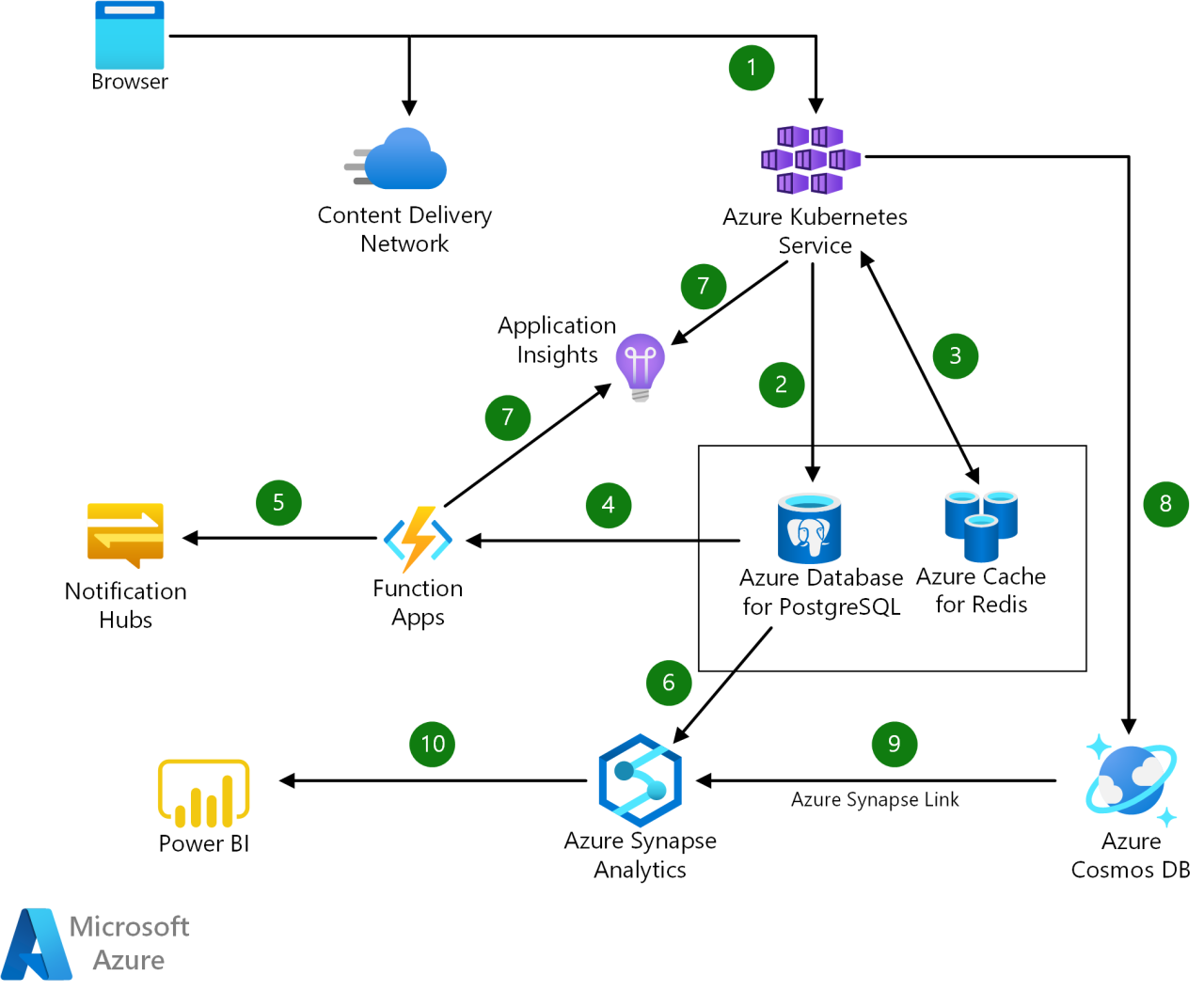
Cloud-native networking introduces new security challenges due to its dynamic and distributed nature. This section will explore the security risks associated with cloud-native networking and discuss best practices for securing these networks.
Security Risks and Challenges
- Lack of visibility:Cloud-native networks are highly dynamic and distributed, making it difficult to gain visibility into network traffic and security events.
- Increased attack surface:Cloud-native networks expose a larger attack surface due to the use of containers, microservices, and APIs.
- Dynamic and ephemeral nature:Cloud-native networks are constantly changing, making it difficult to apply traditional security controls.
- Multi-tenancy:Cloud-native networks are often shared by multiple tenants, increasing the risk of data breaches and other security incidents.
- Shared responsibility model:Cloud-native networking involves a shared responsibility model between the cloud provider and the customer, which can lead to confusion about who is responsible for security.
Best Practices for Securing Cloud-Native Networks
- Implement network monitoring and observability tools:Gain visibility into network traffic and security events to detect and respond to threats.
- Use micro-segmentation and network segmentation:Divide the network into smaller, isolated segments to limit the spread of attacks.
- Automate security controls and use orchestration tools:Automate security controls to keep pace with the dynamic nature of cloud-native networks.
- Implement tenant isolation and access control:Isolate tenants from each other and implement strict access controls to prevent unauthorized access.
- Define clear roles and responsibilities for security:Establish clear roles and responsibilities for security between the cloud provider and the customer.
Role of Encryption
Encryption is crucial for securing cloud-native networks. It protects data in transit and at rest from unauthorized access.
Continuous Monitoring and Threat Detection
Continuous monitoring and threat detection are essential for identifying and responding to security threats in cloud-native networks.
Cloud-Native Networking Use Cases
Cloud-native networking solutions are revolutionizing industries, enabling organizations to unlock new possibilities and drive innovation. These solutions offer numerous benefits, including improved agility, scalability, and security. Let’s explore real-world examples of how cloud-native networking is transforming various sectors:
Healthcare
* Remote monitoring: Cloud-native networking enables real-time data sharing between medical devices and healthcare providers, facilitating remote patient monitoring. This improves patient care by allowing healthcare professionals to track vital signs, identify potential health issues, and provide timely interventions from anywhere.
Telehealth
Cloud-native networking supports telehealth platforms, enabling virtual consultations between patients and healthcare providers. This enhances accessibility to healthcare services, particularly in underserved areas or during emergencies.
Retail
* Personalized recommendations: Cloud-native networking facilitates the collection and analysis of customer data across multiple channels. This enables retailers to provide personalized product recommendations, tailored to individual preferences and shopping history.
Omnichannel shopping
Cloud-native networking supports seamless omnichannel shopping experiences. Customers can browse products online, check availability in nearby stores, and make purchases through a unified platform, regardless of the device or channel they use.
Manufacturing
* Real-time data sharing: Cloud-native networking enables real-time data sharing between machines, sensors, and production systems. This allows manufacturers to monitor production processes, identify inefficiencies, and optimize operations in real-time.
Automation
Cloud-native networking supports automation by connecting industrial devices and systems. This enables manufacturers to automate tasks such as inventory management, quality control, and predictive maintenance.
Finance
* Reduced risk: Cloud-native networking enhances security by providing secure and reliable connectivity between financial institutions, customers, and third-party providers. This reduces the risk of data breaches and unauthorized access.
Improved compliance
Cloud-native networking simplifies compliance with regulatory requirements by providing centralized visibility and control over network traffic. This enables financial institutions to meet industry standards and avoid penalties.
Education
* Improved access to resources: Cloud-native networking facilitates access to educational resources for students and educators. This includes online learning platforms, digital libraries, and collaborative tools that can be accessed from anywhere with an internet connection.
Personalized learning experiences
Cloud-native networking enables the collection and analysis of student data. This allows educators to personalize learning experiences, tailor instruction to individual needs, and track student progress in real-time.
Emerging Trends in Cloud-Native Networking
Cloud-native networking is rapidly evolving, with new trends and advancements emerging all the time. Two of the most significant trends are the adoption of AI/ML and edge computing.
AI/ML is being used to automate and optimize a wide range of networking tasks, such as traffic management, security, and troubleshooting. This can lead to significant improvements in efficiency and performance. Edge computing is bringing computing and storage resources closer to the edge of the network, which can reduce latency and improve performance for applications that require real-time data processing.
AI/ML in Cloud-Native Networking
AI/ML is being used in a variety of ways to improve cloud-native networking, including:
- Traffic management: AI/ML can be used to analyze traffic patterns and identify potential bottlenecks. This information can then be used to optimize traffic flow and improve performance.
- Security: AI/ML can be used to detect and mitigate security threats. For example, AI/ML can be used to identify malicious traffic patterns and block them.
- Troubleshooting: AI/ML can be used to identify and resolve network problems. For example, AI/ML can be used to identify the root cause of a network outage.
Edge Computing in Cloud-Native Networking
Edge computing is bringing computing and storage resources closer to the edge of the network. This can reduce latency and improve performance for applications that require real-time data processing.
Edge computing is particularly well-suited for applications that require:
- Low latency: Edge computing can reduce latency by bringing computing and storage resources closer to the devices that need them.
- High bandwidth: Edge computing can provide high bandwidth by using local resources to process data.
- Real-time processing: Edge computing can enable real-time processing of data by eliminating the need to send data to a central location for processing.
– Comparison of Cloud-Native Networking Solutions
Cloud-native networking solutions provide a range of capabilities that enable organizations to build and manage modern, cloud-based applications. Kubernetes, OpenShift, and Istio are three popular cloud-native networking solutions that offer distinct features and benefits.The following table compares these solutions based on key aspects:| Feature | Kubernetes | OpenShift | Istio ||—|—|—|—|| Networking | Calico, Flannel, Weave Net | OVN, Multus, Open vSwitch | Envoy || Service Mesh | Linkerd, Istio | Service Mesh Interface (SMI) | Service Mesh Interface (SMI) || Security | NetworkPolicy, PodSecurityPolicy | Security Context Constraints, Pod Security Standards | AuthorizationPolicy, Mutual TLS || Pricing | Open source | Open source | Open source || Use Cases | Container orchestration, microservices | Container orchestration, enterprise applications | Service mesh, microservices |Kubernetes is a widely adopted open-source container orchestration platform that provides basic networking capabilities through plugins such as Calico, Flannel, and Weave Net.
It also supports service meshes like Linkerd and Istio for advanced networking and security.OpenShift is a Red Hat-developed enterprise Kubernetes distribution that includes additional features such as OVN, Multus, and Open vSwitch for networking. It also provides a built-in service mesh interface (SMI) for managing service meshes.Istio
is a dedicated service mesh that provides a range of features for managing microservices communication, including load balancing, traffic management, and security. It is open source and can be used with Kubernetes or other container orchestration platforms.The choice of cloud-native networking solution depends on the specific requirements of the organization.
Kubernetes is a good option for organizations that need a flexible and customizable solution, while OpenShift is better suited for enterprise environments that require additional features and support. Istio is ideal for organizations that need a dedicated service mesh for managing microservices communication.
Design Principles for Cloud-Native Networking
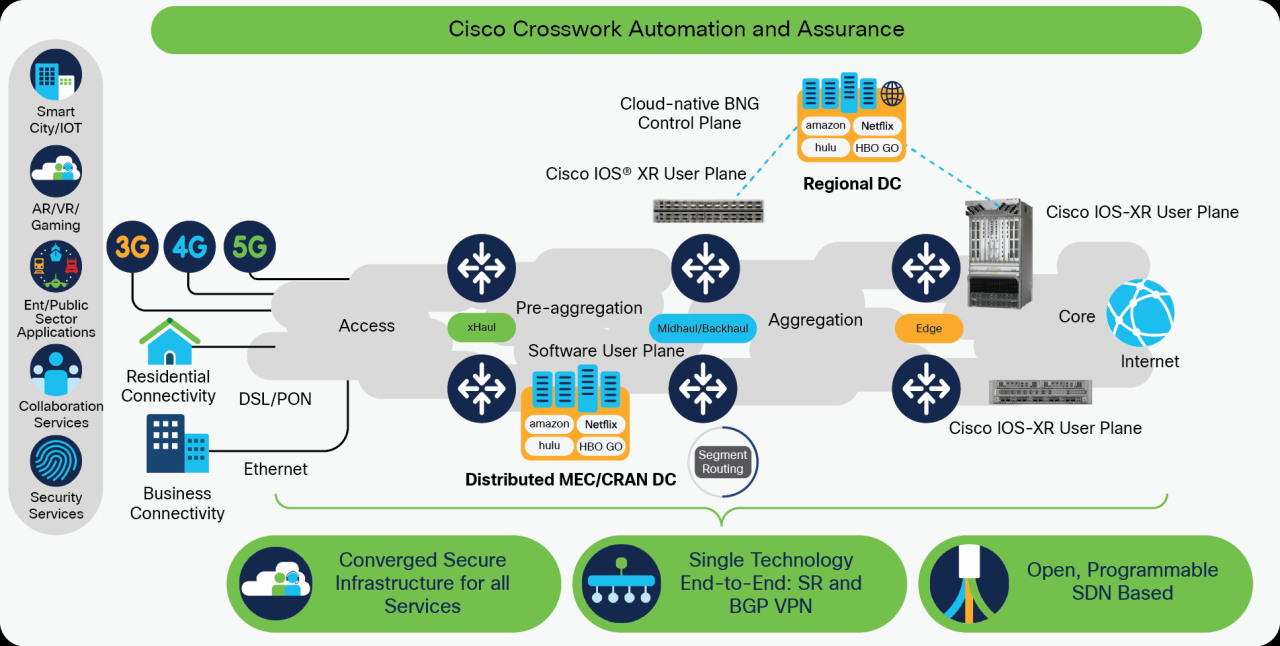
Implementing and managing cloud-native networks require careful planning and adherence to best practices. Here are the key design principles to consider:
Scalability
Cloud-native networks must be designed to handle varying workloads and traffic patterns. Implement autoscaling mechanisms to automatically adjust resources based on demand, ensuring seamless performance during peak loads.
Resilience
Networks should be highly resilient to withstand failures and outages. Employ redundancy, fault tolerance, and self-healing mechanisms to ensure continuous connectivity and minimize disruptions.
Cost Optimization
Cloud-native networking solutions should be cost-effective. Utilize cost-saving strategies such as right-sizing resources, leveraging managed services, and optimizing network configurations to minimize expenses.
Example Implementations
Several successful cloud-native networking implementations showcase the benefits of these design principles. Google Cloud’s Kubernetes Engine (GKE) provides a managed Kubernetes platform with built-in networking capabilities, offering scalability, resilience, and cost efficiency.
| Principle | Benefits |
|---|---|
| Scalability | Handles varying workloads and traffic patterns |
| Resilience | Withstands failures and outages |
| Cost Optimization | Minimizes expenses |
Sample Configuration:
apiVersion: v1
kind: NetworkPolicy
metadata:
name: allow-app-to-db
spec:
podSelector:
matchLabels:
app: web
ingress:
- from:
- podSelector:
matchLabels:
app: db
Metrics and Monitoring for Cloud-Native Networks
Monitoring is critical for ensuring the performance and health of cloud-native networks.
Key metrics include network latency, throughput, packet loss, and errors. These metrics can be monitored using a variety of tools, including open source solutions such as Prometheus and Grafana, as well as commercial offerings from vendors such as Cisco and VMware.
Network Troubleshooting
Troubleshooting cloud-native networks can be challenging due to the distributed and dynamic nature of these environments. However, there are a number of techniques that can be used to troubleshoot network issues, including:
* Using logging and tracing tools to identify the source of network problems – Analyzing network traffic to identify anomalies – Using network simulation tools to test network configurations and identify potential issues
Case Study: Implementing a Cloud-Native Networking Solution
In the digital era, organizations are rapidly adopting cloud-native technologies to enhance their agility, scalability, and cost-effectiveness. A key aspect of cloud-native adoption is implementing a robust and flexible networking solution that can meet the unique demands of cloud environments.
This case study delves into a successful implementation of a cloud-native networking solution, highlighting the challenges faced, the solutions implemented, and the outcomes achieved.
Challenges
The organization faced several challenges in its existing networking infrastructure, including:
- Manual network configuration and management, leading to slow provisioning and high operational costs.
- Lack of network visibility and control, making it difficult to troubleshoot issues and ensure security.
- Limited scalability and flexibility, hindering the organization’s ability to adapt to changing business needs.
Solutions
To address these challenges, the organization implemented a cloud-native networking solution based on the following principles:
- Software-defined networking (SDN):Centralized control and programmability of the network, enabling automated provisioning and management.
- Containerization:Packaging network functions as containers, ensuring portability and scalability.
- Service mesh:A layer of infrastructure that provides service discovery, load balancing, and other advanced networking capabilities.
Outcomes, Cloud-native networking solutions
The implementation of the cloud-native networking solution resulted in significant benefits for the organization, including:
- Improved agility and scalability:Automated provisioning and containerization enabled the organization to quickly deploy and scale network resources as needed.
- Enhanced visibility and control:Centralized management and monitoring tools provided real-time visibility into network traffic and performance.
- Increased security:The service mesh provided advanced security features, such as encryption and access control, to protect network resources.
- Reduced operational costs:Automation and containerization significantly reduced the time and effort required for network management, leading to cost savings.
Cloud-Native Networking for Hybrid and Multi-Cloud Environments
As organizations adopt hybrid and multi-cloud strategies, the need for robust and flexible networking solutions that can seamlessly connect and manage networks across different cloud platforms becomes increasingly important. Cloud-native networking offers a modern approach to addressing these challenges, providing a consistent and portable way to build, deploy, and manage networks in hybrid and multi-cloud environments.
Implementing cloud-native networking in hybrid and multi-cloud environments requires careful planning and execution. Key considerations include:
- Interconnecting networks across different cloud platforms
- Ensuring consistent network policies and security across all environments
- Managing network traffic and performance across hybrid and multi-cloud deployments
Several cloud-native networking solutions are available, each with its own strengths and weaknesses. Kubernetes networking, service meshes, and cloud-native load balancers are among the most popular options. Choosing the right solution depends on the specific requirements and use cases of each organization.
Organizations that have successfully implemented cloud-native networking in hybrid and multi-cloud environments have reported significant benefits, including:
- Improved network agility and flexibility
- Reduced network complexity and operational costs
- Enhanced network security and compliance
A well-designed and implemented cloud-native networking solution can provide a solid foundation for organizations looking to leverage the benefits of hybrid and multi-cloud environments.
Key Considerations and Best Practices
Implementing cloud-native networking in hybrid and multi-cloud environments requires careful consideration of several key factors:
| Consideration | Best Practice |
|---|---|
| Network Interconnection | Use a combination of private and public connectivity options to ensure secure and reliable network connections between different cloud platforms. |
| Network Policies and Security | Establish consistent network policies and security controls across all environments to ensure a uniform level of protection. |
| Network Traffic Management | Implement traffic management strategies, such as load balancing and traffic shaping, to optimize network performance and ensure application availability. |
| Network Monitoring and Observability | Establish comprehensive network monitoring and observability tools to gain visibility into network performance and identify potential issues. |
Case Studies
Several organizations have successfully implemented cloud-native networking in hybrid and multi-cloud environments. One notable example is a large financial institution that used Kubernetes networking to connect its on-premises data center to multiple cloud platforms. This solution enabled the organization to achieve consistent network policies and security across all environments, while also improving network agility and flexibility.
Conclusion
Cloud-native networking offers a powerful approach to building, deploying, and managing networks in hybrid and multi-cloud environments. By carefully considering the key considerations and best practices Artikeld in this blog post, organizations can implement cloud-native networking solutions that will provide a solid foundation for their digital transformation initiatives.
Future of Cloud-Native Networking
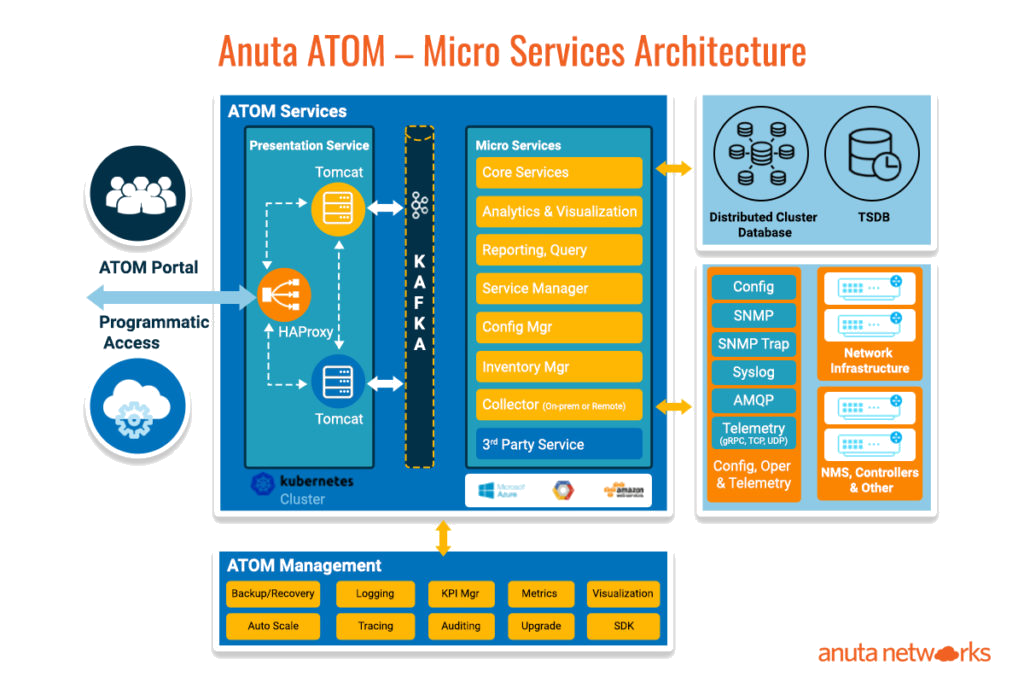
The future of cloud-native networking is bright, with several advancements on the horizon that promise to make networks even more agile, efficient, and secure. Automation, AI/ML, and edge computing are three key technologies that will play a major role in shaping the future of cloud-native networking.
Automation
Automation is already playing a major role in cloud-native networking, and its importance will only grow in the future. Automation can be used to automate a wide range of tasks, from provisioning and configuring networks to managing traffic and security.
This can free up network engineers to focus on more strategic tasks, such as designing and architecting networks.
AI/ML
AI/ML is another technology that is poised to have a major impact on cloud-native networking. AI/ML can be used to improve network performance, security, and reliability. For example, AI/ML can be used to detect and mitigate network attacks, optimize traffic flow, and predict network failures.
Edge Computing
Edge computing is a distributed computing paradigm that brings computing resources closer to the edge of the network. This can improve the performance and reliability of cloud-native applications, especially those that require real-time data processing. Edge computing can also be used to reduce the cost of cloud-native applications by reducing the amount of data that needs to be transferred to the cloud.These
are just a few of the advancements that are expected to shape the future of cloud-native networking. As these technologies continue to mature, we can expect to see even more innovation and disruption in the cloud-native networking space.
Outcome Summary
Cloud-native networking solutions are the future of networking. By embracing cloud-native principles, organizations can unlock a world of benefits and empower their businesses with the agility, flexibility, and cost savings they need to succeed in the modern era. This guide has provided a comprehensive overview of cloud-native networking, but there is much more to explore.
Continue your journey by researching specific solutions, attending industry events, and connecting with experts in the field. The future of networking is cloud-native, and the time to embrace it is now.



